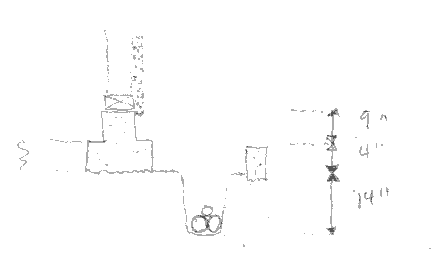Given a trench dug below foundation level, what's the proper way to backfill? Here I'm talking about a trench below the bottom edge of an unreinforced concrete foundation built in 1950, supporting a 2 story stucco house. The trench is somewhat within the 45 degree soil cone supporting the weight of the house:

The foundation itself is about 13 inches high, the trench is 14 inches below that point, set off about 9 inches. Three pipes are in the trench: solid 2", 2" and 1.5" cellular core ABS. The soil is a heavy clay. There is some surface water flow over this area. The home is in an earthquake hazard zone. The original soil grade was much higher: reaching the stucco as shown in the diagram (perhaps 25 inches above the current bottom of trench).
What's the proper way to prevent long term settling (or soil loss) below the foundation in this case? Do you have references? Thanks.
